Energy Management Platform: 5 Tips for a Successful Deployment!


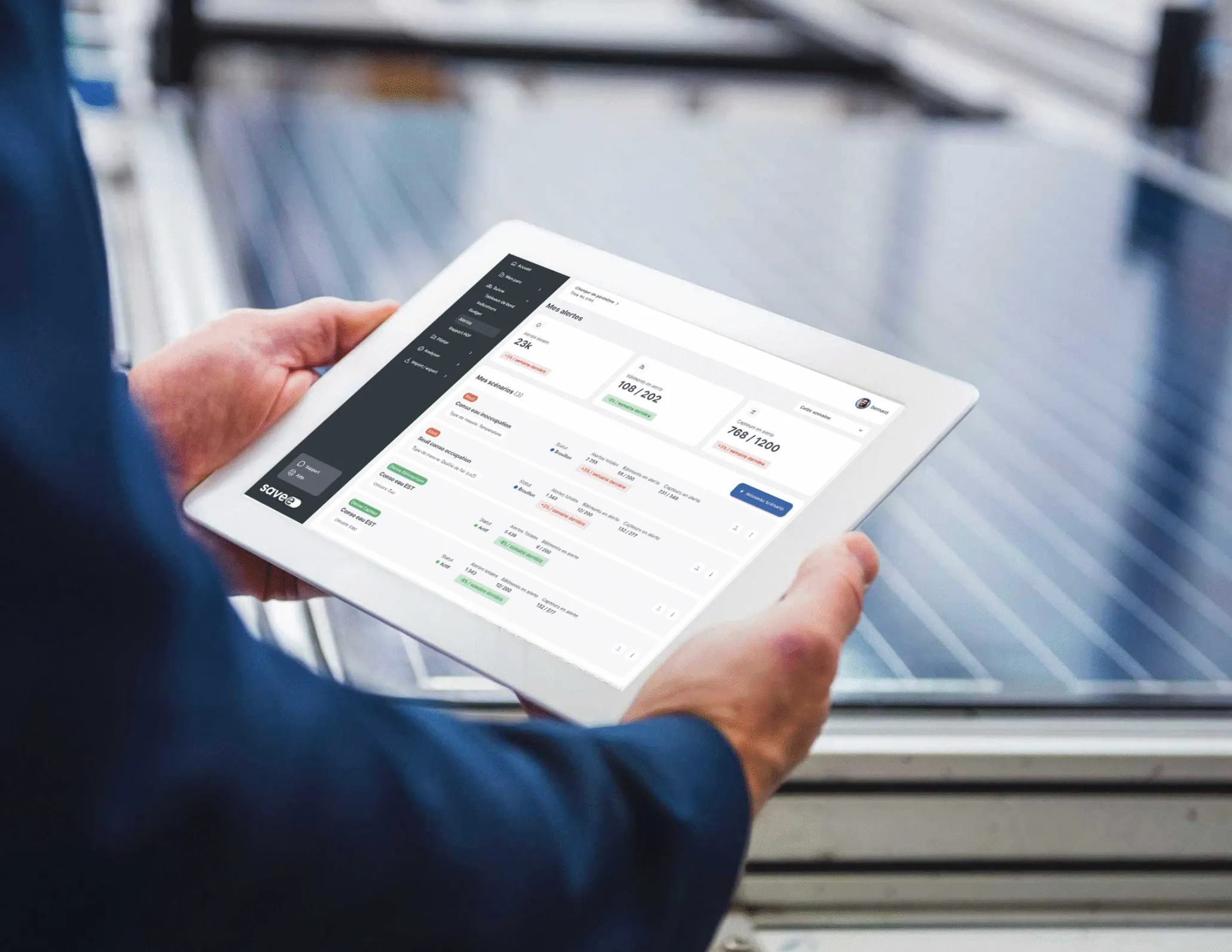
Managing energy at the scale of a building or a portfolio of buildings is a complex task.
As an energy manager or facilities manager, you must address growing environmental challenges and increasingly stringent regulatory requirements in the field of energy efficiency… often with limited resources!
One of the key elements of a successful energy management strategy is the choice of an efficient and suitable energy monitoring software platform.
That’s why we’ve decided to share these few tips and best practices, based on 5 years of experience in energy management projects with businesses and local authorities.
What is an Energy Management Platform?
Also known as Energy Management Software (EMS), the building energy management software is a SaaS platform – accessible from anywhere on both computer and mobile – that centralizes all the energy data of a building or a group of buildings.
Its function is to monitor, analyze, and control the energy consumption of buildings with the goal of reducing it.
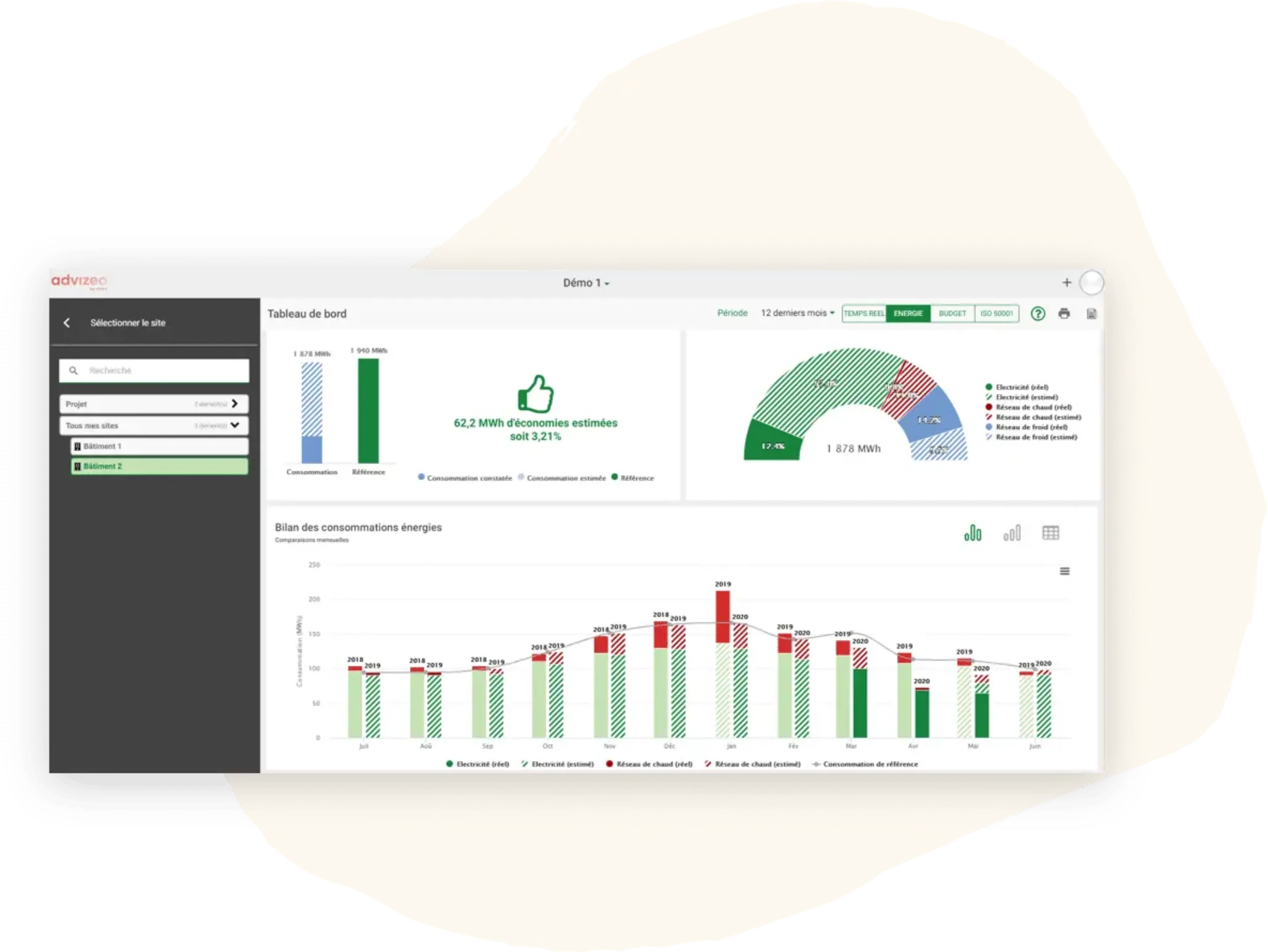
Why is it an important element of an energy management strategy?
Optimizing a building’s energy using only Excel spreadsheets is, at best, a tedious task, and at worst, an unattainable one – especially when dozens or even hundreds of buildings make up your real estate portfolio.
Several factors make the deployment of an energy management software solution (or Energy Management) necessary, including:
The Issue of Data Collection
Energy data collection is the foundation of any energy management strategy. Key elements to collect and centralize include energy bills and load curves reported by your smart meters. Additionally, it may be useful to retrieve your Building Energy Management System (BEMS) and Building Automation System (BAS) data and instrument your sites with connected objects to refine your energy metering plan.
The Dynamic and Comparative Nature of Data
Energy data is inherently evolving, and the granularity of the data available is a crucial factor in performing detailed analysis. Excel work can give you a view of past consumption, but updating the data over time will be difficult to manage.
Moreover, putting these data into perspective (weather vs. electricity consumption, for example), juxtaposing them, and comparing multiple sites are essential steps for an effective action plan. The algorithmic processing and machine learning capabilities embedded in energy monitoring software greatly facilitate this type of analysis.
Analysis of Deviations and Alerts
Taking action at the right time and in the right place is key to an energy management strategy. Here are some common deviations that should be detected quickly to prevent energy consumption from skyrocketing: water leaks, lights left on during unoccupied hours, improper equipment startup times, faulty equipment, abnormally high temperatures, etc. The list is long!
Data Sharing
Once you have successfully collected and analyzed your data, the next challenge is sharing and exploiting these data by multiple stakeholders. Indeed, energy management of a building or a portfolio of buildings must be a collective and coordinated approach to be fully effective. The project owner, maintenance teams, and energy managers must work together to ensure sustainable energy savings. This requires a reliable and shared interface between these stakeholders, a role that is fulfilled by an energy monitoring platform.
As you can see, it is strongly recommended to rely on an energy monitoring platform that centralizes all your data and helps you identify energy-saving opportunities. This will allow you to focus first on high-impact actions, with an assessed and controlled return on investment.
Our 5 Tips for Choosing Your Energy Management Platform
Tip #1 | Set Success Criteria for Your Project: What Objectives Are You Addressing?
To assess the success of an energy monitoring platform deployment project, it is important to establish the key objectives and expected outcomes in advance.
Tracking and guiding maintenance actions, identifying priority renovation works for your buildings, meeting regulatory requirements, fulfilling the CSR goals set by your organization, reducing your energy bill, or minimizing your environmental impact – the objectives can be multiple, and it is crucial to define and prioritize them.
Your requirements for selecting an energy monitoring software should stem from these objectives.
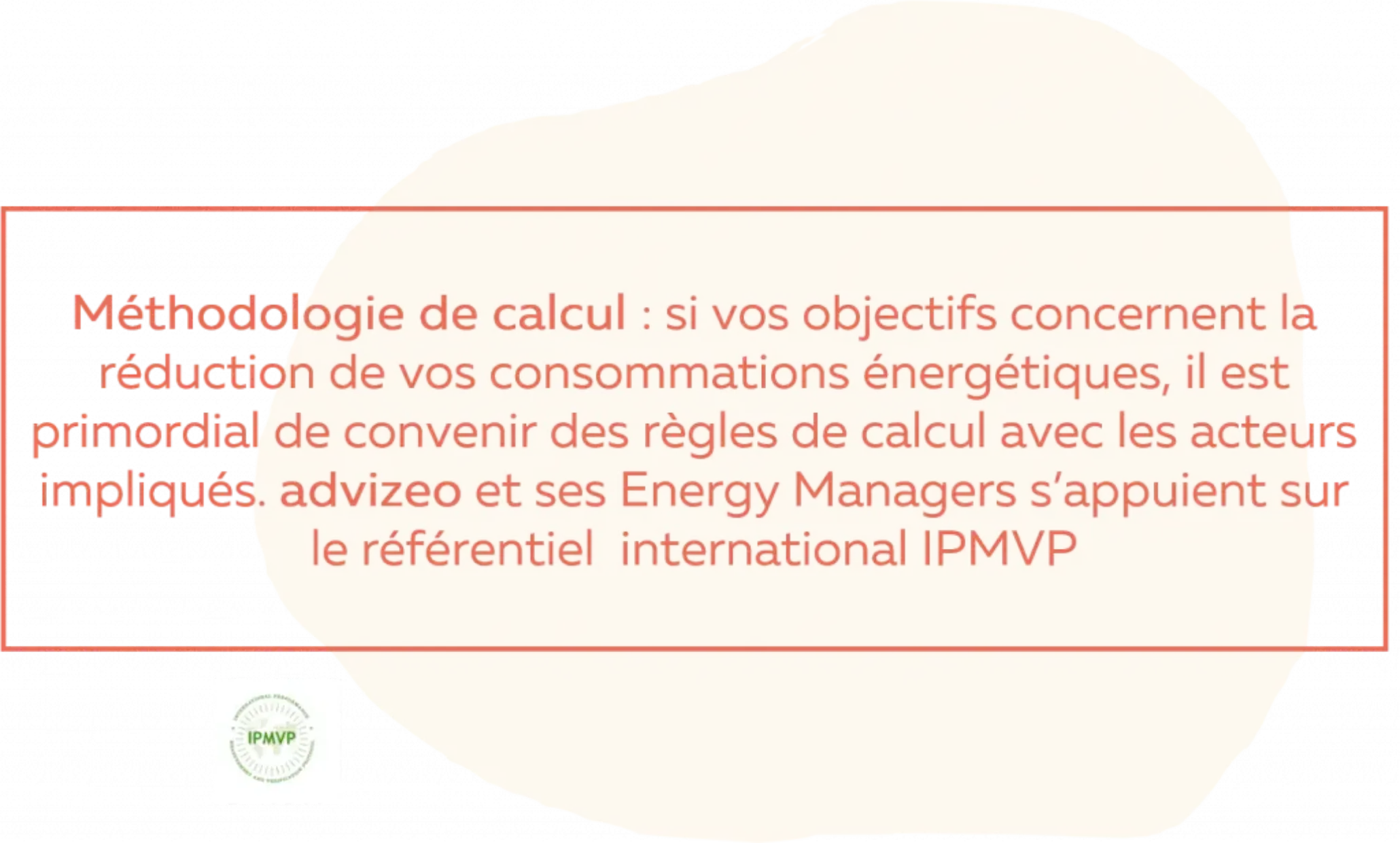
Tip #2 | Define the list of essential features to meet these objectives
Once the objectives are defined, create a specifications document (which can be brief) listing the key expected features. Prioritize efficiency and accessibility over completeness. It’s better for the chosen software to omit a secondary feature than to sacrifice efficiency on one of the essential features needed to achieve your objectives.
Here are some must-have features for an energy management platform:
- Recovery and display of load curves
- Integration of data from connected objects (via LoRaWAN network)
- Management and monitoring of action plans
- Alert configuration
- Comparison of energy performance across sites
- Invoice tracking: optimization of subscribed power, calculation of billed vs. consumed discrepancies
- Monitoring of ISO 50001
- Etc.
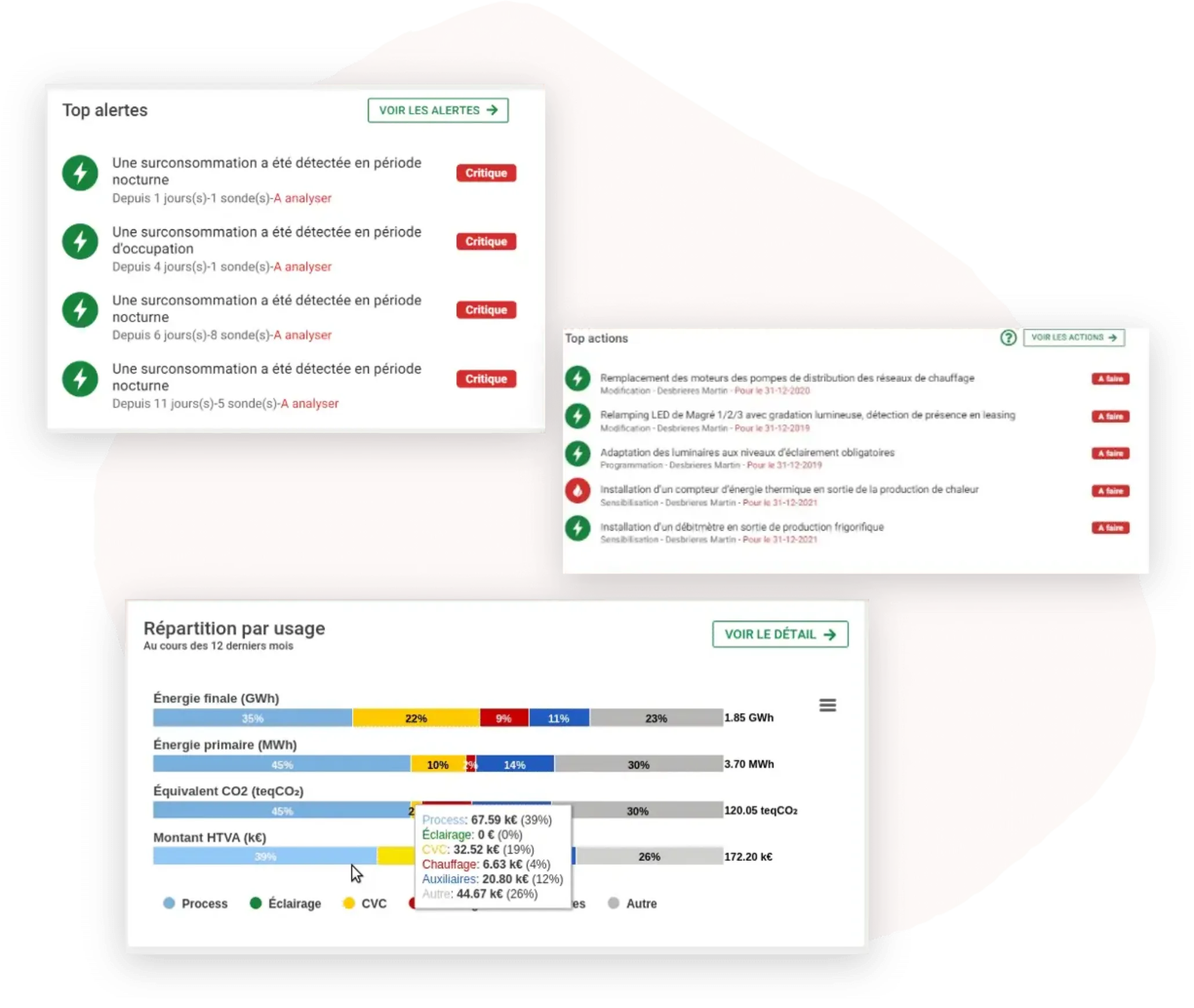
Tip #3 | Don’t Overlook the Importance of Measurement and Energy Metering Plan!
Having centralized data on a software platform is one thing, but ensuring its reliability and making it actionable to reduce your energy consumption is another.
To achieve this goal, it is essential to start by building a well-structured energy measurement system: desired meters and measurements, identifying significant uses. This initial work – which must remain consistent over time – saves a lot of time in your analysis, enhancing energy efficiency.
Furthermore, the level of detail required for your metering plan will influence the need to instrument your building – and to what extent – which in turn impacts the importance of integrating data from connected objects into the energy management software you select.
Again, prioritize quality over quantity to ensure you have reliable and actionable data!
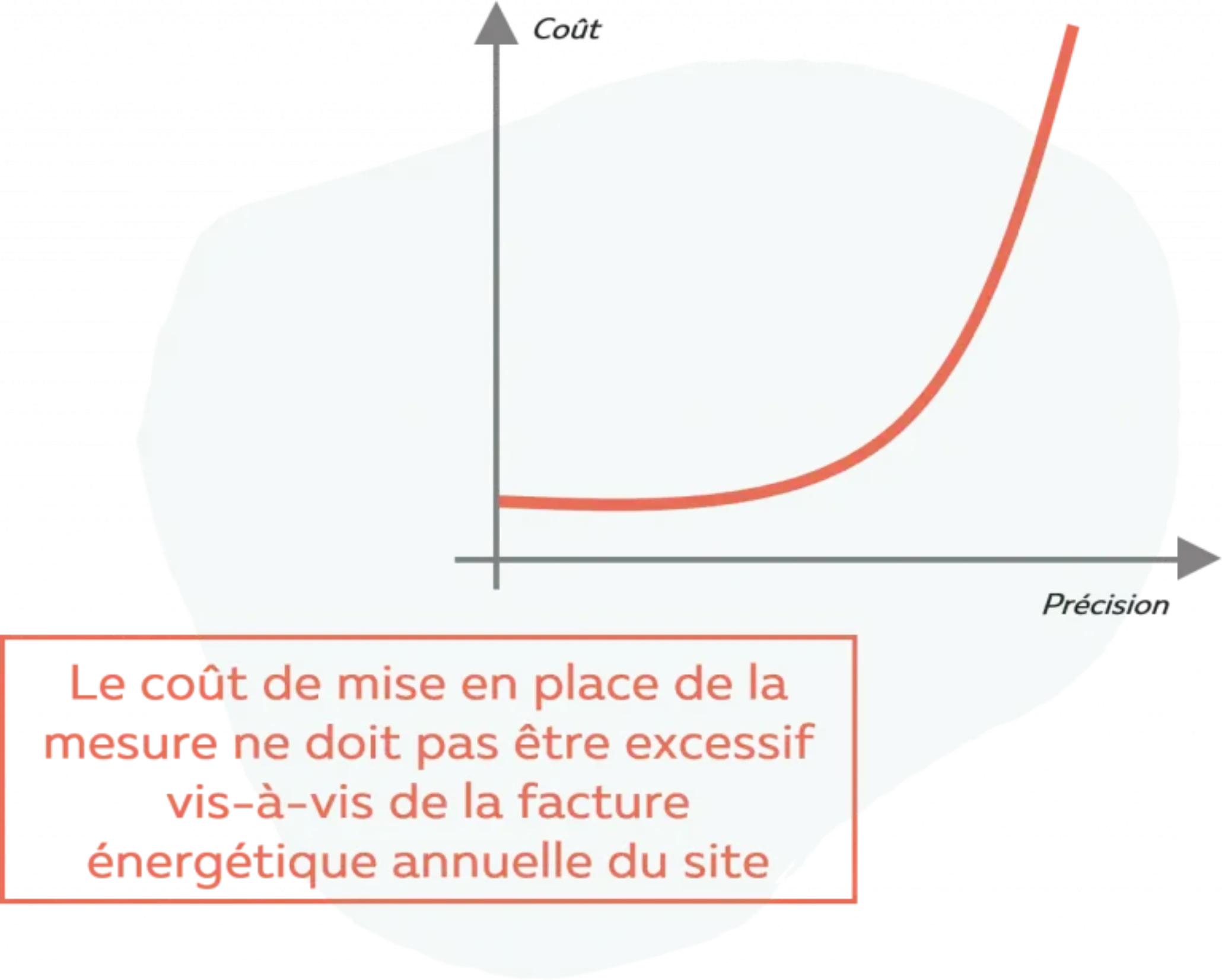
Tip #4 | Choose a Service Provider Before Choosing Software
Energy management software solutions are abundant on the market, and it can be particularly difficult to navigate through them.
Beyond the software features, one of the key success factors lies in the service provider’s ability to help you maximize the platform’s potential and achieve your energy performance goals.
Here are some important questions to ask when choosing a service provider:
Pure player or field-based actor?
On one side, you have software developers, and on the other, companies from the building sector – engineering firms, technical study offices, or maintenance providers – that have developed or rely on software to meet certain needs for themselves and their clients.
The first will have a stronger software and development expertise. The second will have a better understanding of your operational challenges and will be able to assist you more effectively with works or equipment changes.
A factual element that can give you insights into the provider’s orientation is the ratio of technical teams (energy efficiency engineers, data scientists) to the total workforce (which includes sales teams, software developers, administrative functions, and support).
Keep in mind that regardless of your internal resources, energy management is a complex and evolving discipline. Relying on energy efficiency experts with whom you can challenge your analyses can be a key factor for the success of your project.
Is the provider responsible for development, or do they rely on a partner’s solution?
If the provider is responsible for development, don’t hesitate to ask for as many details as possible about how the platform is designed and updated (for a detailed list of questions, we invite you to download our checklist).
If the provider relies on an energy management platform from a partner, try to learn more about the partner and their sustainability (by gathering as many answers as possible to the questions listed above). Also, make sure the provider has a strong enough relationship with the development partner to influence the platform’s development.
Startup or large group?
Among the energy monitoring platforms available on the market, some are developed by young structures with a “startup” profile.
While this offers certain advantages – agility, ability to mobilize dedicated development teams, a strong innovation spirit – it is essential to assess the provider’s sustainability and their ability to maintain the platform and support you in the long term.
This is essential for three key reasons:
- The tertiary decree sets energy consumption reduction targets for the long term: 2030, 2040, 2050.
- The cost of changing an energy platform can be significant, especially the “hidden” costs: data retrieval, action plans, reconfiguration of connected objects if instrumentation is involved, etc.
- A poorly maintained (or no longer maintained) platform leads to errors: data reliability, connection issues, suspended functionality development, etc.
Commitment to Energy Savings?
This is an important financial and contractual question, as it has a significant impact on the nature of the service and the level of investment from your supplier. And consequently, your own investment (both literally and figuratively).
This commitment can take different forms (with Energy Performance Contracts – EPC – being the most common) and can be carried by either your maintenance provider or your software supplier.
In any case, good coordination between the maintenance team, the project owner (you), and the platform supplier is essential to achieve the expected results in reducing energy consumption.
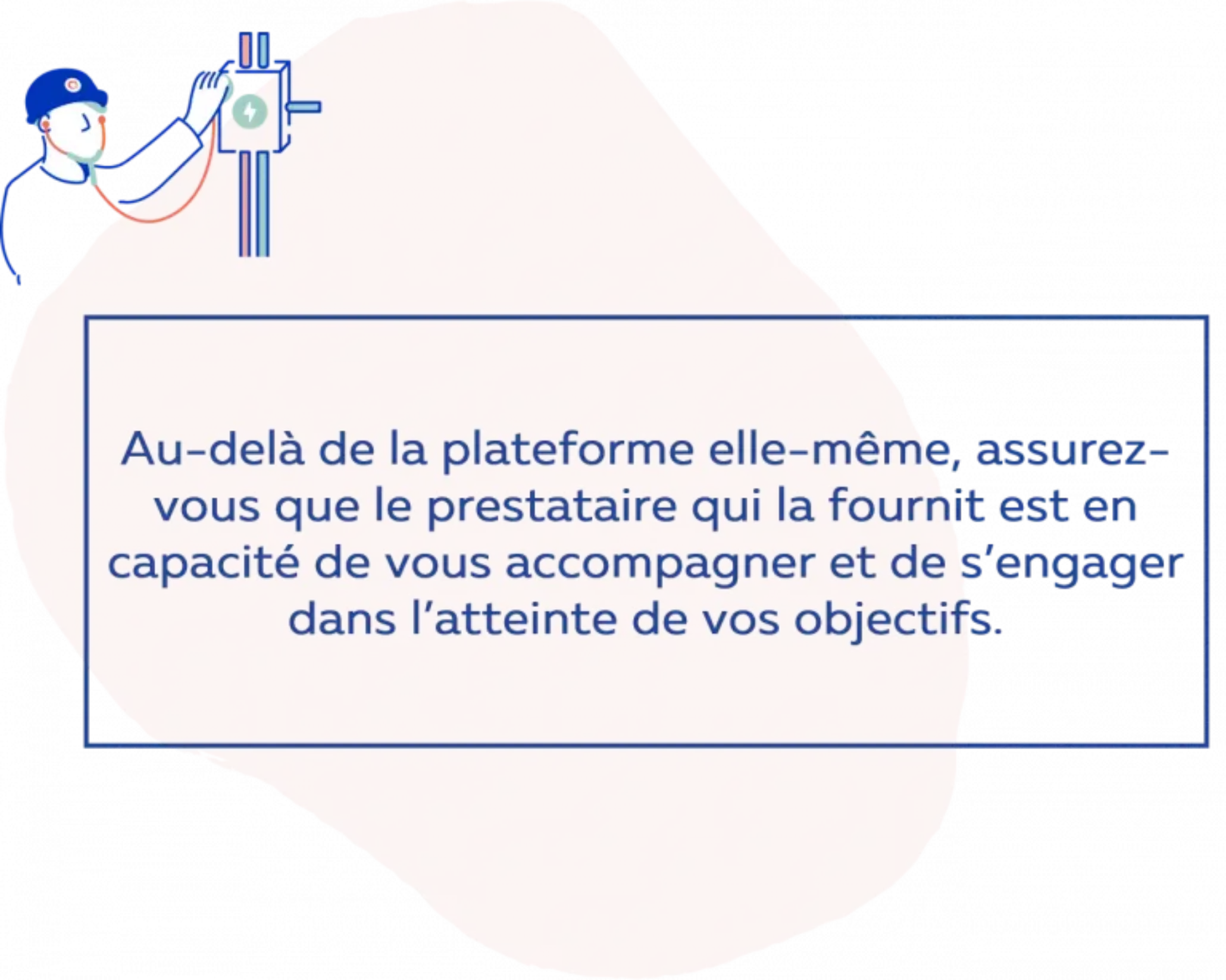
Tip #5 | Challenge Your Provider by Requesting a Pilot Phase!
The best way to ensure that the energy monitoring platform you choose meets your needs is to test it on a defined scope. Choose buildings from your portfolio that are suitable and ask the provider to prove their capabilities over a set period (between 2 and 6 months, depending on the complexity and size of the project).
This will allow you to test not only the software and its features, but also the provider’s ability to deploy it and make it fully usable by your teams. Don’t hesitate to measure the energy savings achieved during the trial to rationalize your choice as much as possible.
Finally: Don’t Ask the Impossible from Your Energy Management Platform!
Experience shows that an energy management platform is a necessary but not sufficient condition for achieving significant and sustainable energy savings!
The software will help you identify energy-saving opportunities and prioritize actions. But it is the actions implemented that generate actual energy savings. These savings primarily depend on the human factor, the relevance of the analyses, common sense – some might call it “farmer’s common sense” – and the coordination between the stakeholders involved in the energy efficiency of your buildings

